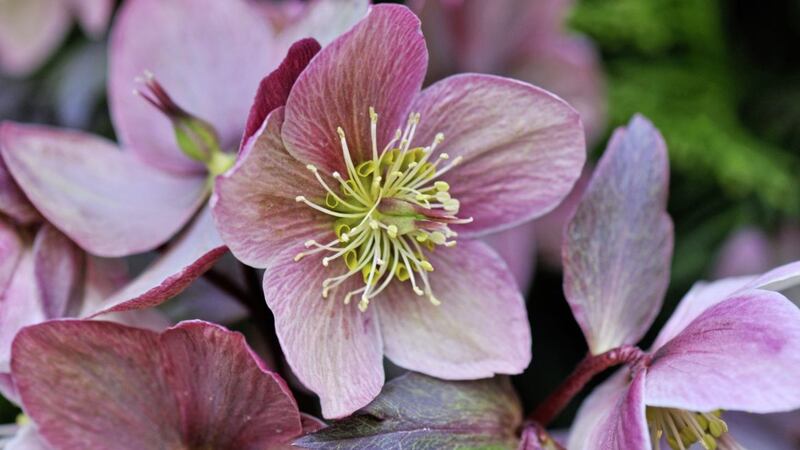IT’s the middle of January and there’s not a lot to be cheerful about. The ‘stretch’ in the evenings still doesn’t take us past 5pm, while pay day can’t come around quick enough. Add to this the worries and uncertainties around the coronavirus and we have a perfect recipe for deep winter blues.
It may not be an antidote on par with a fortnight in the sun but find a mature woodland garden, get down close to ground level and marvel at one of winter’s minor miracles.
Hellebores would most likely get overwhelmed in a brimming summer border, so instead they choose to flower when the bulbs are barely breaking the surface and most perennials continue to enjoy their subterranean winter retreat.
While their flowers are as pretty as any, the hellebore is not a showy plant. Its delicate-looking cup-shaped head is bowed as if shy and unwelcoming of all the attention it is receiving. But these are tough perennial plants and robust flowers – they need to be in order withstand all that winter throws at them. Sometimes they may even play dead, collapsing in heavy frost like a tender exotic. However, once the thaw arrives they recover quickly, regaining their semi-upright posture.
They flower for an extended period with blooms in a range of colours – from white to almost black, with pinks, purples, clarets, yellows and greens all in between. Look closer still and the flowers often have exquisite internal markings.
They tend to prefer a sunny spot or part shade and like lots of rich organic matter, conditions that mimic the forest floor. For deep shade opt for Helleborus foetidus – the stinking hellebore, so called because of the aroma given off by its leaves. They will tolerate pots in the short-term but much prefer their vigorous roots in terra firma, where they will thrive for decades. Many varieties boast evergreen foliage, sometimes with attractive silver or marbled leaves. Damaged or diseased leaves are best removed in late autumn ahead of flowering.
Ensconced in a free-draining earth, with little encouragement they will propagate themselves, setting seed after flowering and producing seedlings beneath where those downward-facing blooms once hung. The young plants can be dug up and moved, helping colonise a wide area over several generations.
Both passive and active breeding can bring many surprises, with numerous potential hybrids and even something unique to your garden in the shape of a ‘sport’.
Generally pest free and low maintenance, this member of the Ranunculaceae (buttercup) family will be content with an occasional leafmould mulch around their base – just avoid leaving them waterlogged.
Helleborus niger, a clump-forming, usually evergreen perennial, is much loved for its nodding clusters of bowl-shaped white flowers. The attractive deep green foliage consists of multiple smaller leaves, while the flowers of the various cultivars are usually white.
Favoured varieties are ‘Christmas Carol’, ‘Dafine’, ‘Shining Star’, and ‘Jushua'.
Helleborus orientalis has yellow, pink and dark purple flowers, and there are also varieties with spotted blooms. Like Helleborus niger, this Christmas rose comes in various sizes, from small enough to be used in a hanging basket through to a tall bush which needs a substantial pot or a big spot in the border.








